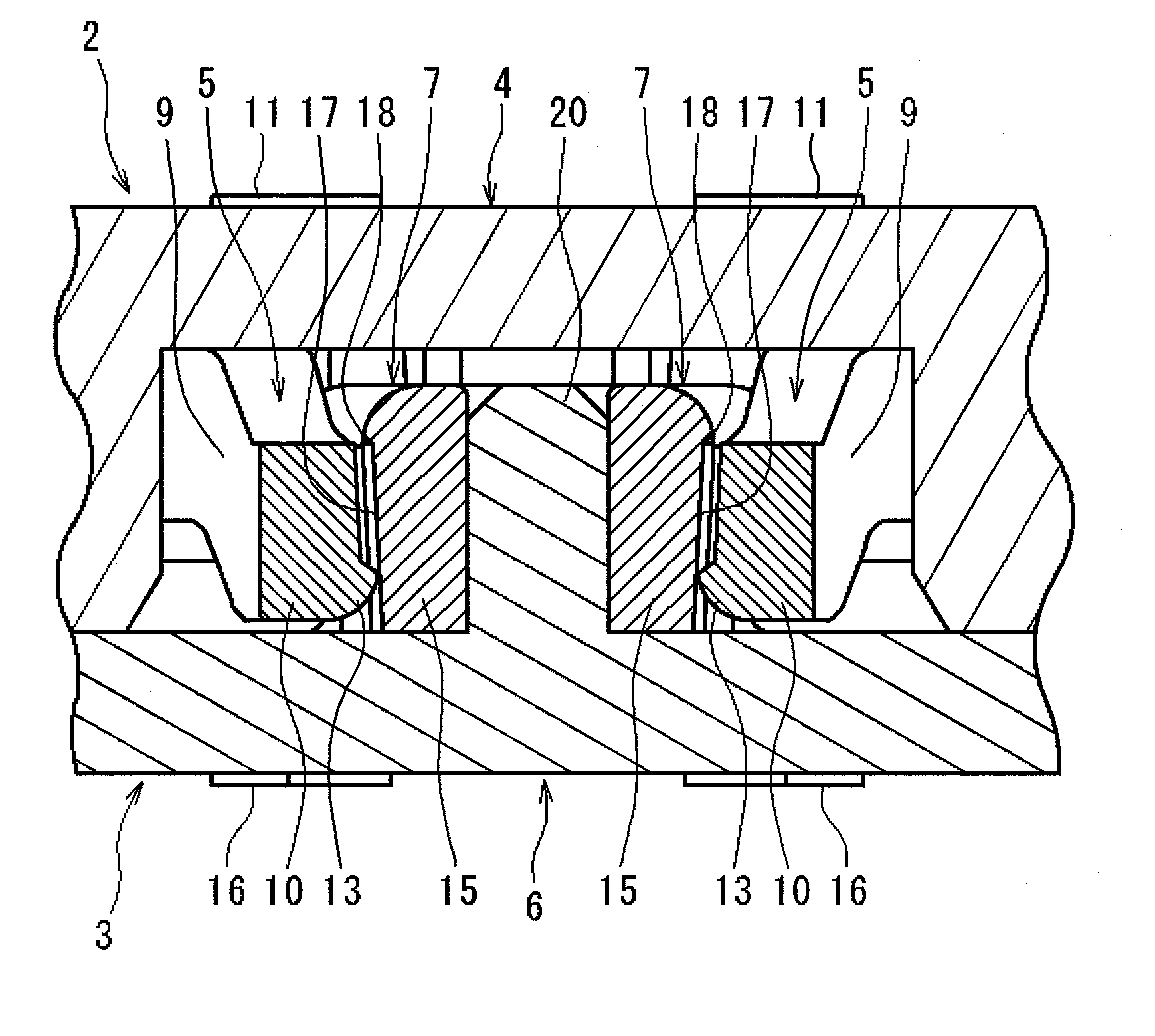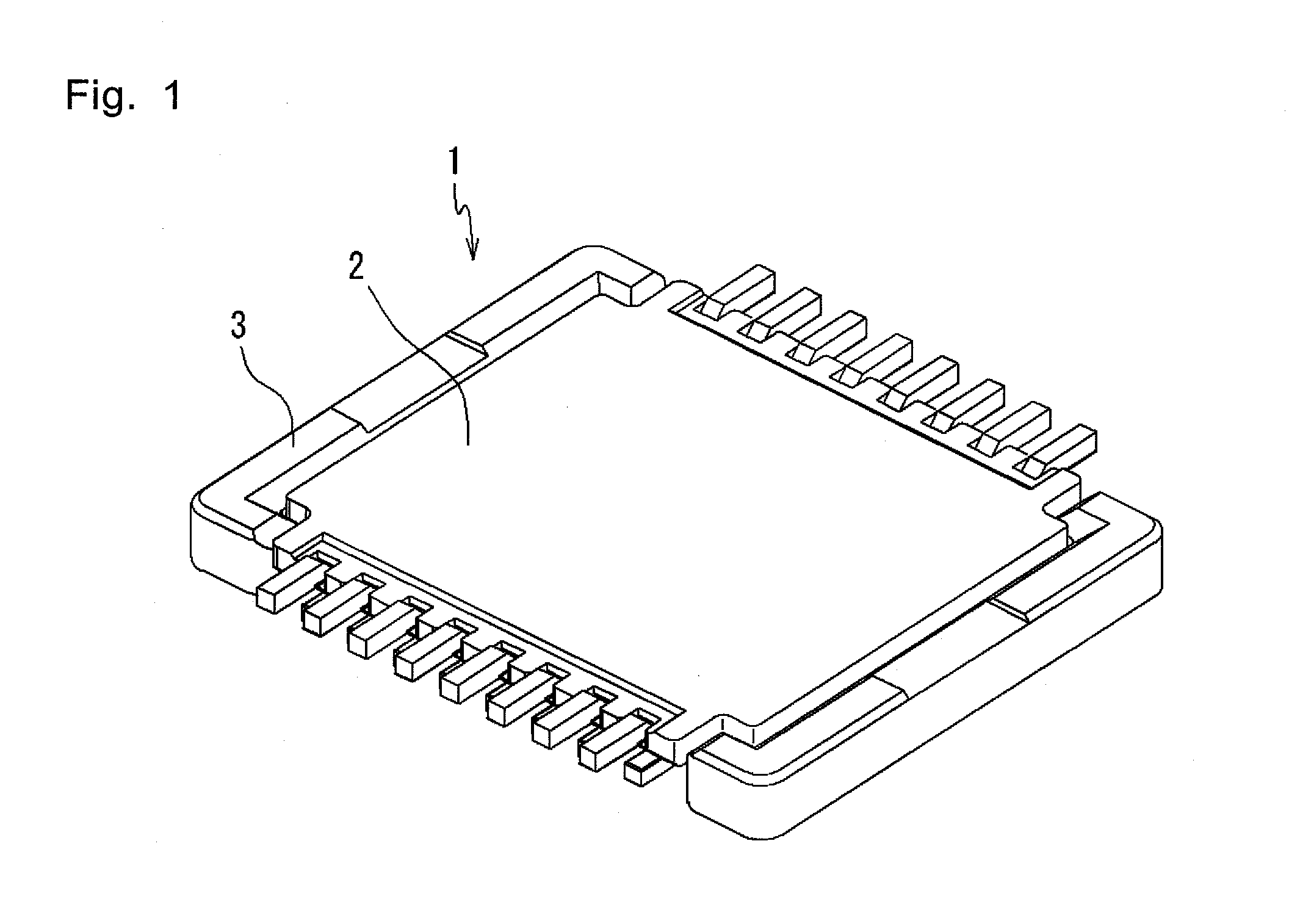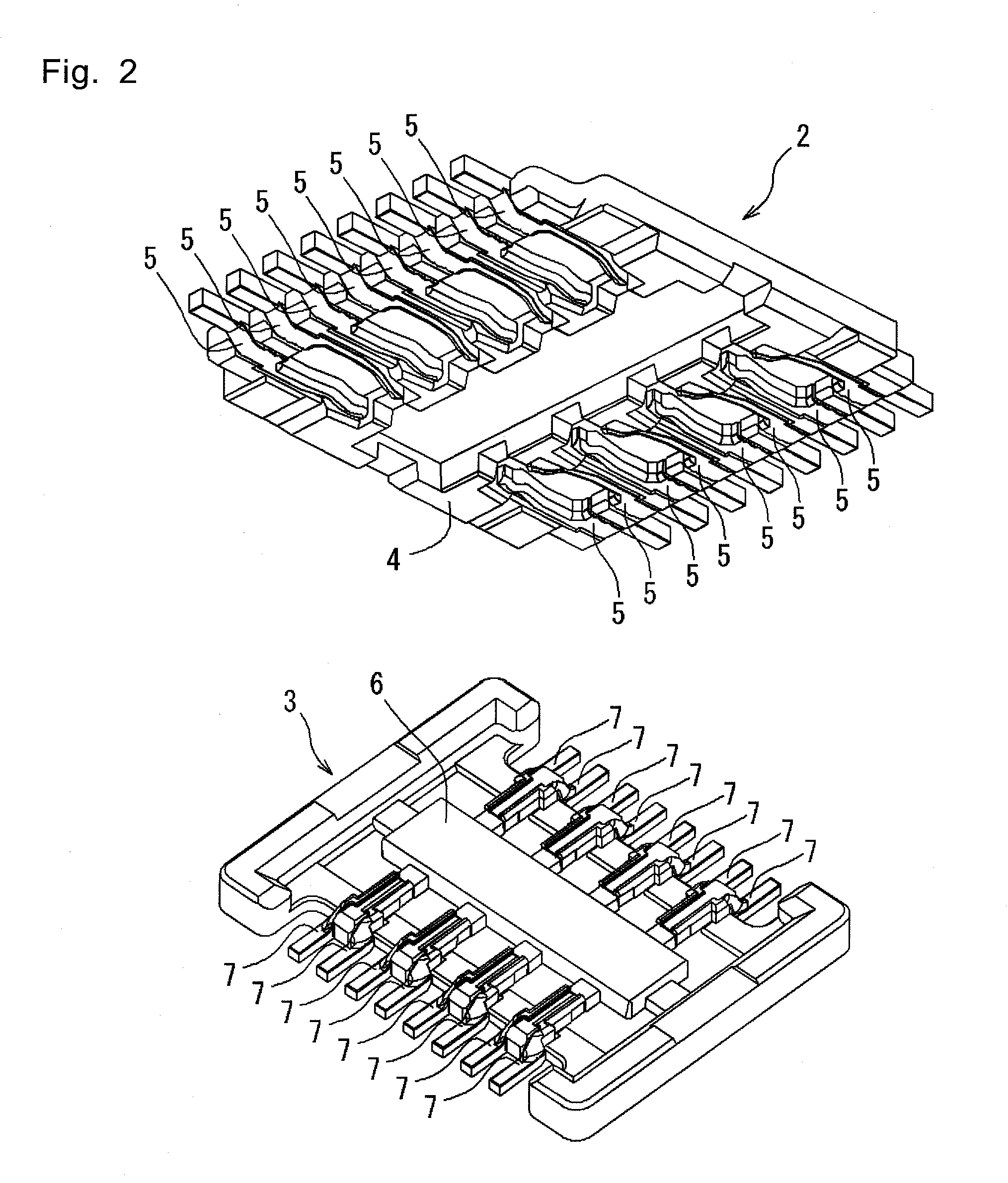Contacts and connector
a technology of contact and connector, which is applied in the manufacture of contact parts, cell components, coupling device connections, etc., can solve the problems of shortening the life of connectors, limiting the height reduction in order to secure the fitting length, and affecting the reliability of conductive contacts, etc., to achieve reliable conductive contacts
- Summary
- Abstract
- Description
- Claims
- Application Information
AI Technical Summary
Benefits of technology
Problems solved by technology
Method used
Image
Examples
Embodiment Construction
[0061]In embodiments of the invention, numerous specific details are set forth in order to provide a more thorough understanding of the invention. However, it will be apparent to one of ordinary skill in the art that the invention may be practiced without these specific details.
[0062]In other instances, well-known features have not been described in detail to avoid obscuring the invention.
[0063]An embodiment of the present invention will hereinafter be described with reference to the drawings.
[0064]FIG. 1 shows a connector 1 of one embodiment of the present invention. The connector 1 consists of a socket (first connection member) 2 and a plug (second connection member) 3.
[0065]As shown in FIG. 2 and FIG. 3, the socket 2 retains a plurality of pairs of right and left female-type metal contacts 5 arranged in a plastic housing 4. Also, as shown in FIG. 2 and FIG. 4, the plug 3 retains a plurality of pairs of right and left male-type metal contacts (conductive members) 7 arranged in a p...
PUM
| Property | Measurement | Unit |
|---|---|---|
| voltage | aaaaa | aaaaa |
| conductive | aaaaa | aaaaa |
| size | aaaaa | aaaaa |
Abstract
Description
Claims
Application Information
 Login to View More
Login to View More - R&D
- Intellectual Property
- Life Sciences
- Materials
- Tech Scout
- Unparalleled Data Quality
- Higher Quality Content
- 60% Fewer Hallucinations
Browse by: Latest US Patents, China's latest patents, Technical Efficacy Thesaurus, Application Domain, Technology Topic, Popular Technical Reports.
© 2025 PatSnap. All rights reserved.Legal|Privacy policy|Modern Slavery Act Transparency Statement|Sitemap|About US| Contact US: help@patsnap.com



